The NVIDIA GeForce RTX 2060 6GB Founders Edition Review: Not Quite Mainstream
by Nate Oh on January 7, 2019 9:00 AM ESTAshes of the Singularity: Escalation (DX12)
A veteran from both our 2016 and 2017 game lists, Ashes of the Singularity: Escalation remains the DirectX 12 trailblazer, with developer Oxide Games tailoring and designing the Nitrous Engine around such low-level APIs. The game makes the most of DX12's key features, from asynchronous compute to multi-threaded work submission and high batch counts. And with full Vulkan support, Ashes provides a good common ground between the forward-looking APIs of today. Its built-in benchmark tool is still one of the most versatile ways of measuring in-game workloads in terms of output data, automation, and analysis; by offering such a tool publicly and as part-and-parcel of the game, it's an example that other developers should take note of.
Settings and methodology remain identical from its usage in the 2016 GPU suite. To note, we are utilizing the original Ashes Extreme graphical preset, which compares to the current one with MSAA dialed down from x4 to x2, as well as adjusting Texture Rank (MipsToRemove in settings.ini).
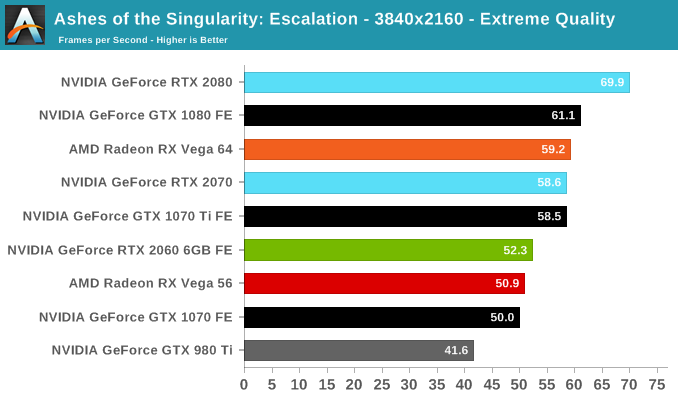
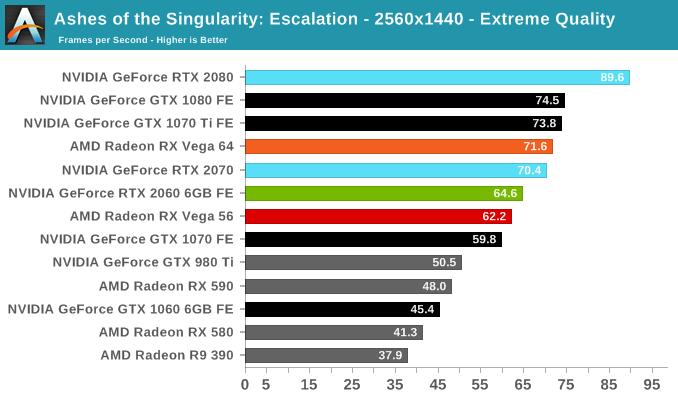
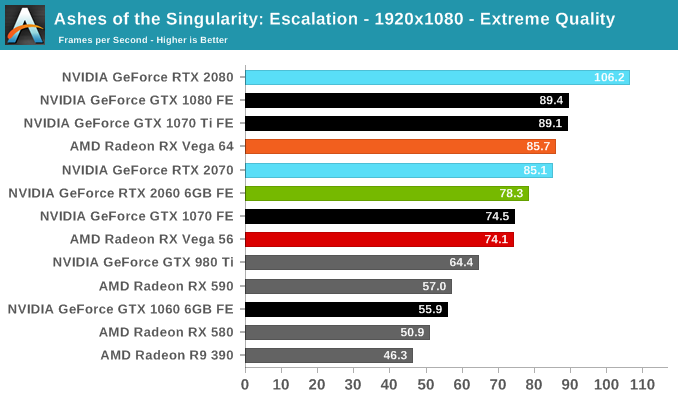
Somewhat surprisingly, the RTX 2060 (6GB) performs poorly in Ashes, closer to the GTX 1070 than the GTX 1070 Ti. Although it is still ahead of the RX Vega 56, it's not an ideal situation, where the lead over the GTX 1060 6GB is cut to around 40%.
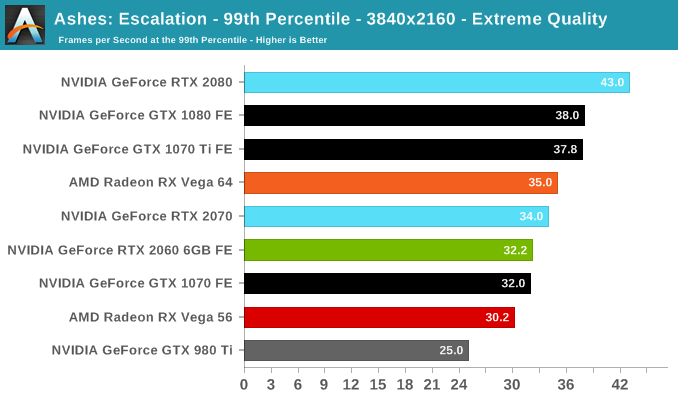
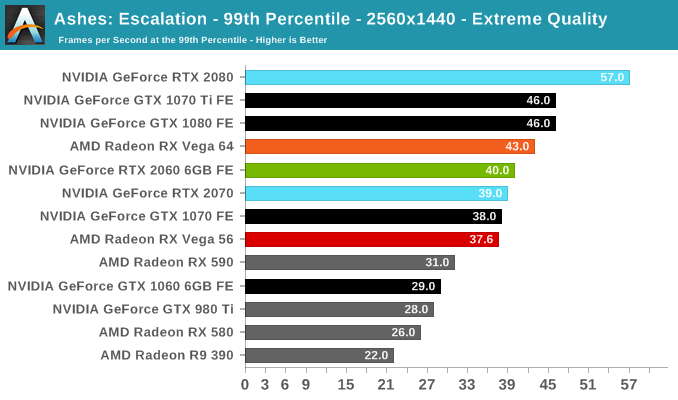
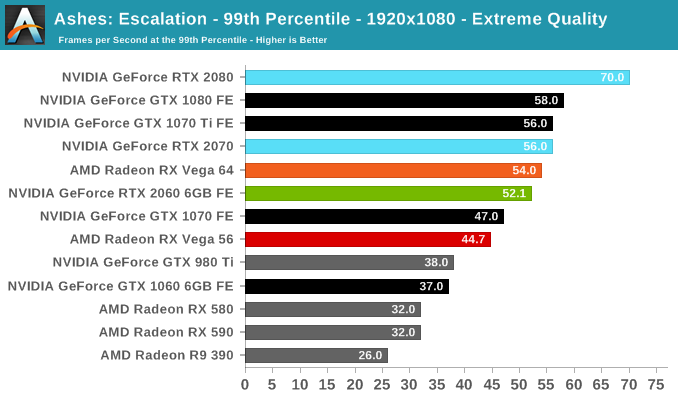


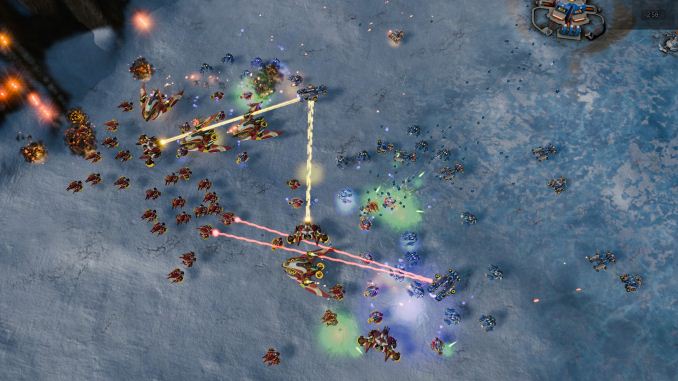








134 Comments
View All Comments
dave_the_nerd - Monday, January 7, 2019 - link
Selfish opinion: but I really would have appreciated a 970 in the graph, in addition to the 1060. (Only two generations old, same market segment and similar price point.)CiccioB - Monday, January 7, 2019 - link
Yes, also the 1080Ti is missing, and it is quite a pity, especially for the compute tests.Icehawk - Tuesday, January 8, 2019 - link
I wish they would show the 970 in tests too - partially because it was a popular card and most folks wait a couple of cycles to update and partially because that is what I have :) I would like to upgrade as it struggles at 4k and even 1440 on some of the latest games but I can’t stomach $500+poohbear - Monday, January 7, 2019 - link
Uhm, you didn't test for its RTX performance? Wasn't that the main contention with a GTX 2060????boozed - Monday, January 7, 2019 - link
Still waiting for real-world tests?saiga6360 - Tuesday, January 8, 2019 - link
Battlefield V? Crappy game but it does have ray tracing implemented.RamIt - Monday, January 7, 2019 - link
This card is worth no more than $199 us dollars. Sorry Nvidia your pricing stricture keeps me from buying your products from now on.RamIt - Monday, January 7, 2019 - link
Sorry for the typos. A little bit hammered at the moment but certainly mean what I implied.mkaibear - Tuesday, January 8, 2019 - link
Don't you buy on price/performance then? That seems odd.For the price this offers great performance.
sing_electric - Tuesday, January 8, 2019 - link
There's a lot of good value at ~$200 (RX 580, 1060 6GB since prices are being dragged down by the 2060), and then essentially nothing worth buying until the 2060 at $350, and then nothing until the 2070. (You could make a case for a Vega 64 on sale for $350, but even then, it's more power-hungry, etc.).So if GPU performance is important, and your budget can accommodate a $250-400 GPU, the 2060 is the one to buy. People can complain about $350 being a "high end" price, but the fact is, it's WAY faster than what you get for spending say, $280 on an RX 590.